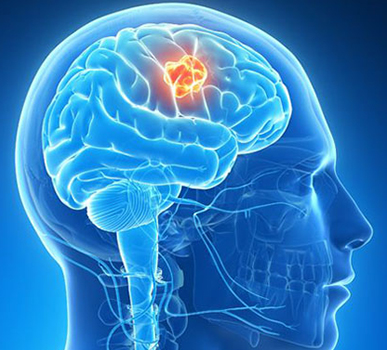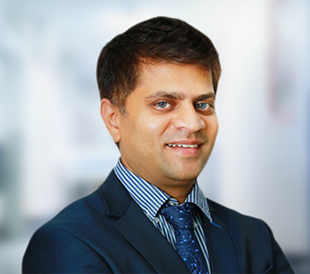
What is Neuro Oncology?
Neurological cancer is cancer of the brain or spine. Sometimes it affects both areas of the body at once. Brain cancer occurs when cells inside your brain reproduce uncontrollably, forming a mass. This mass, also called a tumor, can be cancerous (high grade, malignant) or noncancerous (low grade, benign). Tumors can develop in the central nervous system (CNS), which includes the brain and spinal cord.
Malignant neurological tumors can invade nearby tissue and spread to other parts of your brain. Benign tumors do not spread, but they can still cause neurological cancer symptoms, especially if they grow to be quite large.
CAN-C: Well-known for providing newest and most innovative treatments available for Neuro Oncology in Bangalore.
Here, you will find information about signs and symptoms, causes and risk factors, types, diagnosis, staging and prevention about neuro oncology.
Neurological cancer symptoms vary from person to person. Some of the most common symptoms include:
Weakness
Seizures
Headaches
Urinating more frequently
Difficulty walking
Changes in alertness, memory or concentration
Changes in personality
Nausea and/or vomiting
A risk factor is anything that increases a person's chance of developing a brain tumor. Although risk factors often influence the development of a brain tumor, most do not directly cause a brain tumor. Some people with several risk factors never develop a brain tumor, while others with no known risk factors do. Some of the risk factors are as follows:
Age: Brain tumors are more common in children and older adults, although people of any age can develop a brain tumor.
Gender: In general, men are more likely than women to develop a brain tumor. However, some specific types of brain tumors, such as meningioma, are more common in women.
Family history: About 5% of brain tumors may be linked to hereditary genetic factors or conditions, including Li-Fraumeni syndrome, neurofibromatosis, nevoid basal cell carcinoma syndrome, tuberous sclerosis, Turcot syndrome, and von Hippel-Lindau disease. Scientists have also found "clusters" of brain tumors within some families without a link to these known hereditary conditions.
Exposure to infections, viruses, and allergens: Infection with the Epstein-Barr virus (EBV) increases the risk of CNS lymphoma. EBV is more commonly known as the virus that causes mononucleosis or "mono". Sometimes high levels of a common virus called cytomegalovirus (CMV) have been found in brain tumor tissue.
Ionizing radiation: Previous treatment to the brain or head with ionizing radiation, including x-rays, has been shown to be a risk factor for a brain tumor.
Head injury and seizures: Serious head trauma has long been studied for its relationship to brain tumors. Some studies have shown a link between head trauma and meningioma, but not between head trauma and glioma. A history of seizures has also been linked with brain tumors, but because a brain tumor can cause seizures, it is not known if seizures increase the risk of brain tumors, if seizures occur because of the tumor, or if anti-seizure medication increases the risk.
CAN-C: is one of the top centre for Neuro Oncology (Brain and Spinal tumor) treatment in Bangalore.
The most common site for brain tumors is the supratentorial compartment and the most common histological types are those of neuro-epithelial origin (gliomas), followed by meningiomas, pituitary tumors and others. They have been classified into distinct pathological groups.
Tumors of neuro-epithelial tissue
a. Astrocytic tumors
b. Oligodendroglial tumors
c. Mixed gliomas
d. Ependymal tumors
e. Choroid plexus tumors
f. Other neuro-epithelial tumors
g. Neuronal and mixed neuronal–glial tumors
h. Tumors of the pineal region
i. Embryonal tumors
Tumors of peripheral nerves
a. Schwannoma
b. Neurofibroma
c. Perineurioma
d. Malignant peripheral nerve sheath tumour (MPNST)
Tumours of meninges
a. Tumours of meningothelial cells
b. Mesenchymal tumours
c. Primary melanocytic tumours
d. Tumours of uncertain histogenesis
Lymphomas and haematopoietic neoplasms
Germ cell tumours
Tumours of the sellar region
Metastatic tumours
Tests and procedures used to diagnose neuro cancer include:
MRI (magnetic resonance imaging): MRI uses a strong magnetic field and radio waves to provide a clear picture of your body's soft tissues.
a. 3T MRI: This high-tech MRI scanner provides more detailed scans for greater accuracy in neurological cancer diagnosis.
b. Open MRI: Open MRI allows your doctor to treat you during the scan - for example, the doctor could perform a real-time neurological tumor biopsy during the MRI.
c. Functional MRI: Neurologists generally know which areas of the brain are responsible for speech, sensation, memory and other functions, but the exact locations of these centers can vary from person to person. Brain tumors can also shift the locations of these centers. A functional MRI (fMRI) helps your neurologist accurately map your brain, which is critical when planning surgery, radiation therapy and other interventional treatments.
16-slice CT (computed tomography): A 16-slice CT provides cross-sectional images of your brain with even greater speed and more precise detail than a conventional CT.
PET/CT: These scans provide the anatomical data yielded by a CT scan and the metabolic information from a PET scan. This can help pinpoint smaller tumors and show the extent of brain cancer.
Neuropsychological exam: If there are cognitive difficulties or a change in the thinking abilities, then a neuropsychological evaluation might be necessary. These evaluations assess memory, learning, attention, concentration, processing speed, verbal comprehension, visual perception, basic motor and sensory functions, reasoning, problem solving and more.
We at CAN-C are experts in providing Neuro Oncology treatment in Bangalore using latest and minimally invasive surgical techniques.
The staging system most often used for Neurological cancer is the TNM system, which is based on 3 key pieces of information:
The extent of the main tumor (T): How far has the cancer grown into the brain, and has it reached nearby tissues or organs?
The spread to nearby lymph nodes (N): Has the cancer spread to nearby lymph nodes? If so, how many are affected?
The spread (metastasis) to distant sites (M): Has the cancer spread to distant parts of the body?
Other than radiation exposure, at this time, there are no known ways to prevent a brain tumor through lifestyle changes.
"CAN-C: Expertise in Neuro Oncology treatment in Bangalore."
Make An Appointment Today
How Neuro Oncology (Brain and Spinal Cord Cancer) is treated?
If you are diagnosed with a neurological cancer, it is necessary to know the treatments for it and are as follows:
Some neurologic cancers can be removed surgically, although surgery is often combined with chemotherapy, radiation or targeted therapy. Surgery on brain and spinal cord tumors may be done to:
a. Get a biopsy sample to determine the type of tumor
b. Remove the tumor (or as much of it as possible)
c. Help prevent or treat symptoms or possible complications from the tumor
Radiation therapy uses high-energy rays or small particles to kill cancer cells. Radiation therapy may be used in different situations:
a. After surgery to try to kill any remaining tumor cells
b. As the main treatment if surgery is not a good option and medicines are not effective
c. To help prevent or relieve symptoms from the tumor
Types of radiation therapy:
a. Most often, the radiation is focused on the tumor from a source outside the body. This is called external beam radiation therapy (EBRT). This type of radiation therapy is much like getting an x-ray, but the dose of radiation is much higher.
b. Three-dimensional conformal radiation therapy (3D-CRT): 3D-CRT uses the results of imaging tests such as MRI and special computers to map the location of the tumor precisely. Several radiation beams are then shaped and aimed at the tumor from different directions.
c. Intensity modulated radiation therapy (IMRT): IMRT is an advanced form of 3D therapy. It uses a computer-driven machine that moves around the patient as it delivers radiation.
d. Conformal proton beam radiation therapy: Proton beam therapy uses an approach similar to 3D-CRT. But instead of using x-rays, it focuses proton beams on the tumor.
e. Stereotactic radiosurgery (SRS)/stereotactic radiotherapy (SRT): This type of treatment delivers a large, precise radiation dose to the tumor area in a single session (SRS) or in a few sessions (SRT).
f. Brachytherapy (internal radiation therapy): Unlike the external radiation approaches above, brachytherapy involves inserting radioactive material directly into or near the tumor. The radiation it gives off travels a very short distance, so it affects only the tumor. This technique is most often used along with external radiation. It provides a high dose of radiation at the tumor site, while the external radiation treats nearby areas with a lower dose.
g. Whole brain and spinal cord radiation therapy (craniospinal radiation): If tests like an MRI scan or lumbar puncture find the tumor has spread along the covering of the spinal cord (meninges) or into the surrounding cerebrospinal fluid, then radiation may be given to the whole brain and spinal cord. Some tumors such as ependymomas and medulloblastomas are more likely to spread this way and often require craniospinal radiation.
We are the Neuro Oncology (Brain and Spinal tumor) treatment specialist centre in Bangalore.
Chemotherapy (chemo) uses anti-cancer drugs that are usually given into a vein (IV) or taken by mouth. These drugs enter the bloodstream and reach almost all areas of the body. However, many chemo drugs aren't able to enter the brain and reach tumor cells. Chemo is most often used along with other treatments such as surgery and/or radiation therapy. Chemo can also be used by itself, especially for more advanced tumors or for tumors that have come back after other types of treatment.
Some of the chemo drugs used to treat brain and spinal cord tumors include: Carboplatin, Carmustine (BCNU), Cisplatin, Cyclophosphamide, Etoposide, Irinotecan, Lomustine (CCNU), Methotrexate, Procarbazine, Temozolomide, Vincristine. These drugs can be used alone or in combinations, depending on the type of brain tumor.
Targeted drugs work differently from standard chemotherapy drugs.
Bevacizumab (Avastin, Mvasi): Bevacizumab is a man-made version of an immune system protein called a monoclonal antibody. This antibody targets vascular endothelial growth factor (VEGF), a protein that helps tumors form new blood vessels to get nutrients (a process known as angiogenesis). Tumors need new blood vessels to grow.
Everolimus (Afinitor): Everolimus works by blocking a cell protein known as mTOR, which normally helps cells grow and divide into new cells. For subependymal giant cell astrocytomas (SEGAs) that can't be removed completely by surgery, this drug may shrink the tumor or slow its growth for some time, although it's not clear if it can help people with these tumors live longer.
We at CAN-C are excelled in providing Neuro Oncology treatment in Bangalore.
Our Doctors
Dr. Dinesh M G
Specialty: Surgical Oncologist & Laparoscopic Oncosurgeon
Dr. Dinesh M G, is an efficient surgeon specialized in oncology committed to the care and improvement of quality of life of cancer patients. His exceptional surgical skills, teamwork and knowledge are laudable. He is skilled in performing various minimal access oncologic surgeries and has mastered complex open surgeries in the field of oncology.
Completing MBBS from KIMS, Bangalore followed by MS - General Surgery from JJM Medical College, Davangere and M. Ch - Surgical Oncology from Kidwai Memorial Institute of Oncology, he has a Fellowship in Minimal Access Oncology from Basavatarakam Indo American Cancer Institute.

